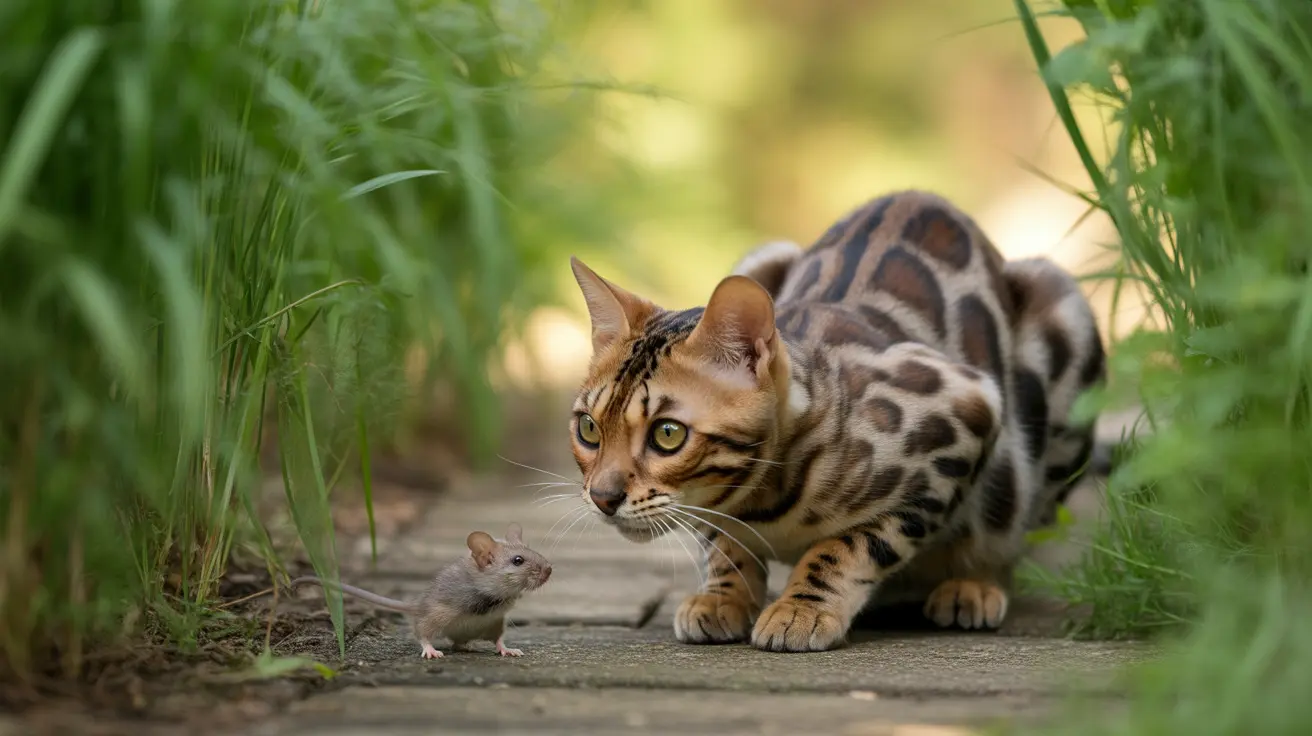Introduction
Cats are nature's perfect hunters, equipped with an impressive array of physical and sensory adaptations that make them exceptional at catching and killing mice. Whether you have a domestic house cat or an outdoor mouser, understanding how cats kill mice reveals fascinating insights into their predatory nature and evolutionary heritage.
This comprehensive guide explores the intricate process of how cats hunt and dispatch their rodent prey, examining everything from their specialized hunting equipment to their tactical approach. We'll also address important health considerations and ways to manage this natural behavior in domestic settings.
The Natural Hunter's Arsenal
Cats come equipped with specialized tools that make them incredibly efficient mouse hunters. Their retractable claws provide silent approach and powerful grip, while their specialized teeth are perfectly designed for delivering a quick, fatal bite. Most notably, cats possess extraordinary sensory capabilities that give them a significant advantage in detecting and tracking mice.
Their whiskers can detect the slightest movements in the air, while their exceptional night vision allows them to hunt effectively in low-light conditions. Additionally, cats' hearing is fine-tuned to detect the high-frequency sounds that mice make, enabling them to locate prey even when it's hidden from sight.
The Hunting Process
Stalking Phase
When a cat detects a mouse, it enters a focused stalking mode. The cat will lower its body, minimize movement sounds, and carefully calculate the distance to its prey. This phase demonstrates remarkable patience, with cats sometimes remaining motionless for extended periods while waiting for the perfect moment to strike.
The Attack
Once within range, cats employ a lightning-fast pounce, using their powerful hind legs to launch themselves at their prey. Their sharp claws and quick reflexes allow them to catch and immobilize the mouse effectively. This attack phase typically happens in a fraction of a second, showcasing the cat's incredible agility and precision.
The Kill Shot
When it comes to the actual kill, cats typically employ one of two primary methods:
- The neck bite: A precise bite to the back of the mouse's neck, severing the spinal cord
- The crush method: Using their powerful jaws to deliver a fatal bite to the mouse's body
Most cats prefer the neck bite method as it's quick and efficient, typically resulting in an instant kill. This technique has been perfected through generations of evolutionary development.
The Pre-Kill "Game"
Many cat owners observe their pets "playing" with mice before killing them. This behavior, while seemingly cruel, serves several purposes:
- Ensures the prey is sufficiently weakened
- Allows the cat to assess for potential threats
- Provides valuable hunting practice
- Reduces the risk of injury from desperate prey
Health and Safety Considerations
While cats are natural mouse hunters, this behavior can pose certain risks to their health. Mice can carry diseases and parasites that may affect your cat. Additionally, mice that have consumed rodenticides can be particularly dangerous if caught and eaten by cats.
To protect your cat, consider:
- Regular veterinary check-ups
- Keeping vaccinations current
- Monitoring for signs of illness after hunting
- Maintaining a regular deworming schedule
Frequently Asked Questions
How do cats use their senses to hunt and kill mice effectively?
Cats utilize their acute hearing to detect mouse movements and vocalizations, their superior night vision to track prey in low light, and their sensitive whiskers to detect air movements. Their sense of smell also helps them locate mice, even when hidden.
Why do cats sometimes play with mice before killing them?
This behavior helps cats ensure their prey is sufficiently weakened before the final kill, reduces their risk of injury, and provides valuable hunting practice. It's an instinctive behavior that serves multiple practical purposes in the wild.
Can well-fed domestic cats still hunt and kill mice?
Yes, hunting behavior is instinctive in cats and not directly related to hunger. Well-fed cats will continue to hunt and kill mice due to their natural predatory drive.
What techniques do cats use to kill mice quickly and safely?
Cats primarily use a precise bite to the back of the neck to quickly dispatch mice. This technique severs the spinal cord and results in an instant kill, minimizing the prey's suffering.
Are there health risks for cats when they catch and eat mice?
Yes, there are several health risks including exposure to parasites, diseases, and potential poisoning from rodenticides that the mice may have consumed. Regular veterinary check-ups are recommended for hunting cats.
Conclusion
Understanding how cats kill mice provides valuable insights into their natural behaviors and instincts. While this predatory behavior is deeply ingrained, responsible pet ownership involves monitoring and managing these activities to ensure both cat and human safety. Whether you're dealing with a dedicated mouser or simply curious about feline behavior, appreciating these natural hunting abilities helps us better understand and care for our feline companions.






